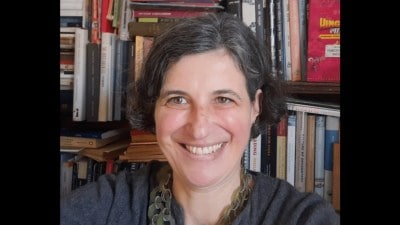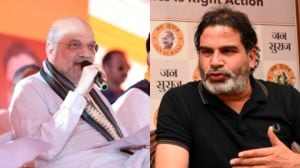Have credit, will vote
Has Veerappa Moily lost his mind? Or, since he is only the chairman of All India Congress Committee’s media cell...

Has Veerappa Moily lost his mind? Or, since he is only the chairman of All India Congress Committee’s media cell and hence represents the Indian National Congress, has the party lost its aam aadmi plot? Since I ask this question in the context of Moily’s statement underlying the importance of low interest rates in the economy, particularly for home loans, I would argue that the party has not forgotten its poverty-votes story, but has found a new chapter: homeownership-votes.
“The issue of home loans is very important as it is related to the aam aadmi,” Moily said two days ago. “Interest rates have to be lowered.” With these tentative words, the Congress seems to be waking up to discover a whole new political world. A world that recognises abject poverty but is not stuck with it. A world that understands the new political potential lying behind India’s new economic reality of 9.6 per cent GDP growth.
Most important, a world moving steadily towards prosperity, where voter aspirations on a roti-kapda-makan foundation are building the ground floor of their dreams — be it the bijli-sadak-pani demands or, as in this case, homeownership. Said to be the biggest asset for any household, the four walls of shelter when owned by it give the household a real stake in the fuzzy notion of nationhood. Overnight, the roads leading to it, the electricity lighting it up, the water flowing in its taps — governance itself — acquire a new meaning, a permanence that gives citizens the luxury to get together and raise issues, as many resident welfare associations are doing in cities.
The downward trend in interest rates since 2001 onwards following the global collapse post-9/11 and the resultant liquidity explosion that took place the world over, India included, helped widen this financial, asset-backed democracy here. Suddenly, aspirations moved from being mere dreams to becoming real houses. This saw big credit numbers rise — home loans, in particular, raced ahead at 40 per cent per annum, as companies ranging from private majors like HDFC and ICICI Bank to government-owned giants like State Bank of India simultaneously drove and benefited from lending to anyone who had an income and wanted to borrow. The poor voting mass at the lower end of the economic pyramid included.
By converting a big number like Rs 5 lakh into smaller slices of Rs 4,000 per month, equated monthly installments (EMI) became a new weapon of mass asset creation. It allowed drivers, electricians, plumbers to work in cities and finance their houses in their villages back home. The traders, clerks, back office professionals who employed them were able to buy Rs 15-20 lakh houses, paying Rs 12,000 per month. Let’s leave the growing mass of upper middle class households or the seriously wealthy alone, for politically they’re invisible.
Just as the wealth effects of homeownership were trickling in, the reversal in interest rates since February 2006 has turned this tide in more ways than one. So steeply and so high have interest rates climbed that banks don’t have the option of increasing tenures any more. If an aam aadmi had borrowed Rs 5 lakh to buy a plot of land in his village at 7.5 per cent in 2005, he would have paid an EMI of Rs 4,000 for 20 years. At 9 per cent, the EMI would have stayed put, but his tenure would have risen to over 27 years. From this point, however, the impact would be crushing — at 10 per cent, the tenure would be more than 70 years. Which means, this 35-year-old man would be all of 105 when he paid the last installment, something that’s statistically unlikely. At 11 per cent, he would pay till perpetuity.
Obviously, this did not and will not happen. Somewhere between 9 per cent and 9.5 per cent, the bank would have increased the EMI amount, in some cases by almost 25-30 per cent. At 11 per cent (today’s rate), for the aam aadmi who has to pay Rs 5,000 per month, the extra Rs 1,000 means cutting back on essential expenditures — transport and health for the worker; health, education and maybe some kinds of food for his family.
In this process of increased financial stress for such households, the sole comfort has been rising property prices, which have kept the aam aadmi’s simmering rage under some control. If they collapse, as many expect them to, we are looking at mass foreclosures and the resultant political implications that such completely legal acts bring with them. Bankers are worried, and are offering deferred payment options for the differential in EMI.
But more than bankers who have to balance their books to avoid high non-performing assets, I suppose it is the Congress party that is understanding the political risk that’s embedded in rising interest rates. Perhaps it is realising that the new and growing currency that’s trickling down from the wealthy to the poor, from cities to villages, is an EMI-backed stake of a huge constituency.
This constituency is telling them that along with high growth, there is a new confidence it has discovered. This confidence has its roots in people taking on a 20-year-long liability to fund their present (buy the house today, pay tomorrow). Meaning, they feel there is enough opportunity for them to earn and pay an EMI for as many years — unemployment or worklessness are concepts that don’t exist anymore. It is saying the growing economy has generated enough surplus for them to lay a claim to an aspiration that so far has been the monopoly of the non-voting rich.
This is a crucial change in the way the ‘poor’ see themselves. It is to the credit of the Congress party that it has caught this signal. It would do well to remember that it was during the BJP administration that interest rates fell and this constituency was created; however, the BJP could not milk it. The Congress will have to remember this when over the next 10 months, nine states hit the election trail. For, among larger states, with the humiliating losses of Gujarat and Himachal Pradesh behind it, the Congress is negotiating Madhya Pradesh and Rajasthan from a position of weakness. If the BJP could make mass development, among many other things, a mainstream issue in Gujarat and HP, perhaps the Congress could do the same with mass homeownership.
gautam.chikermane@expressindia.com





- 01
- 02
- 03
- 04
- 05


























